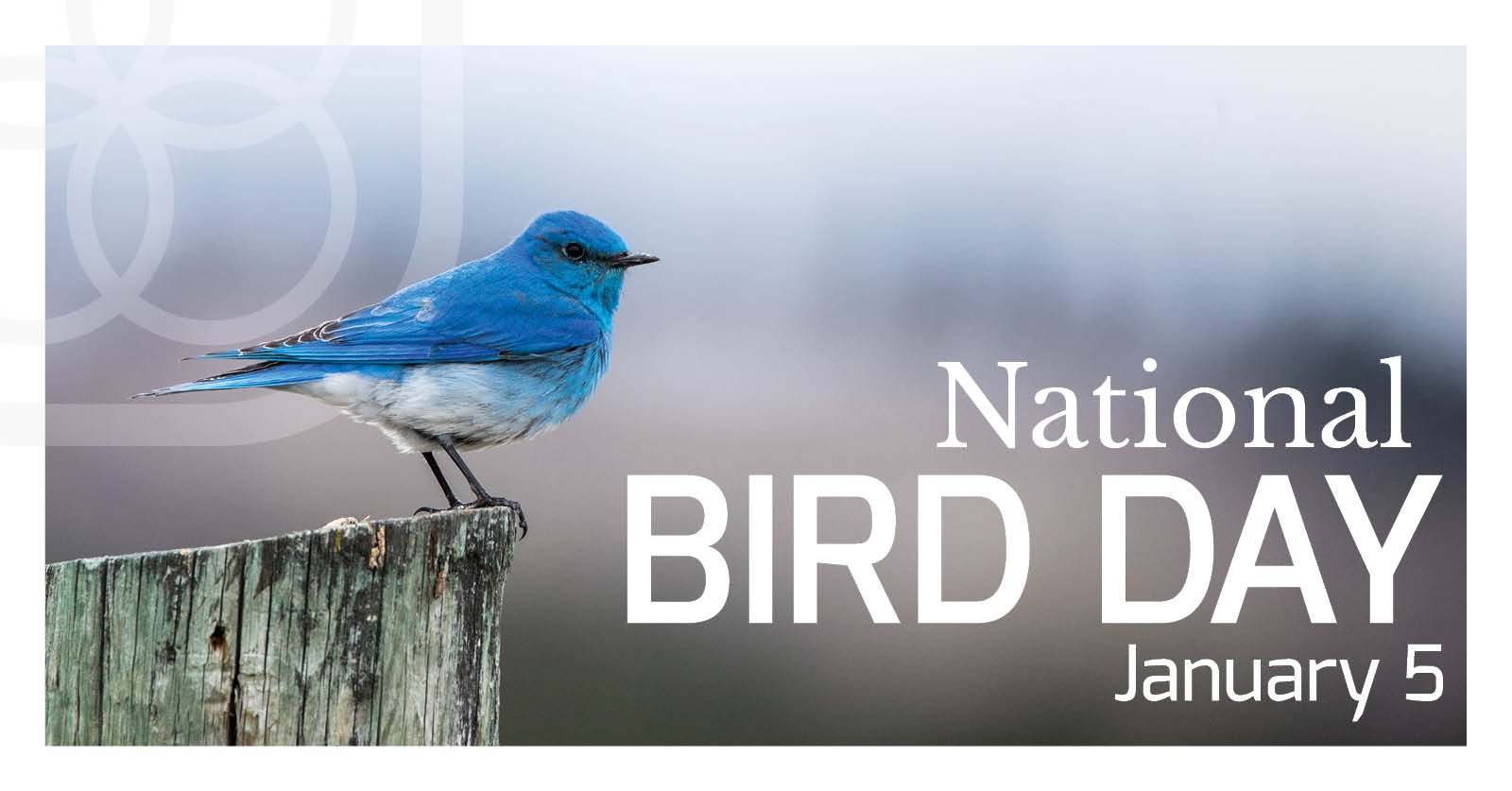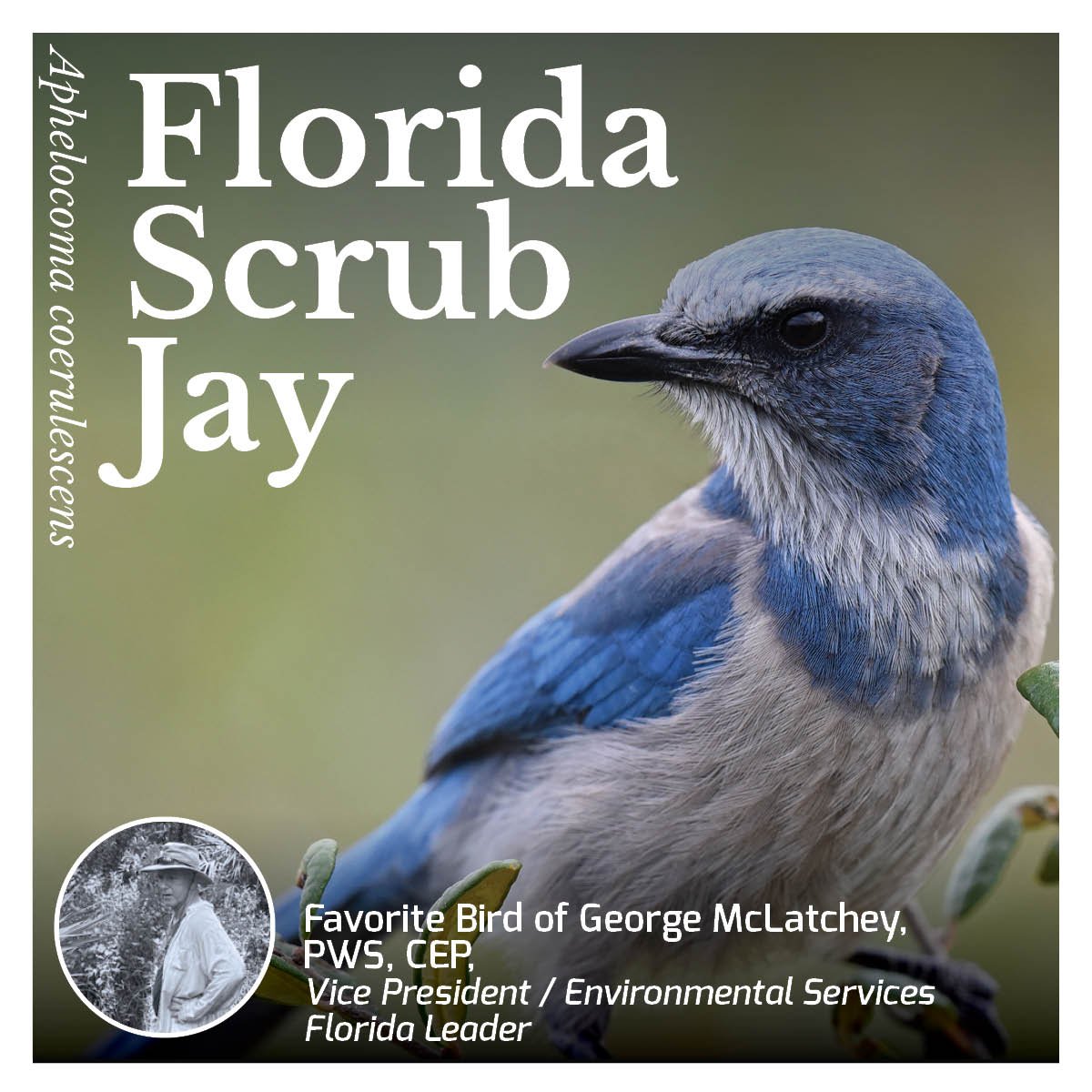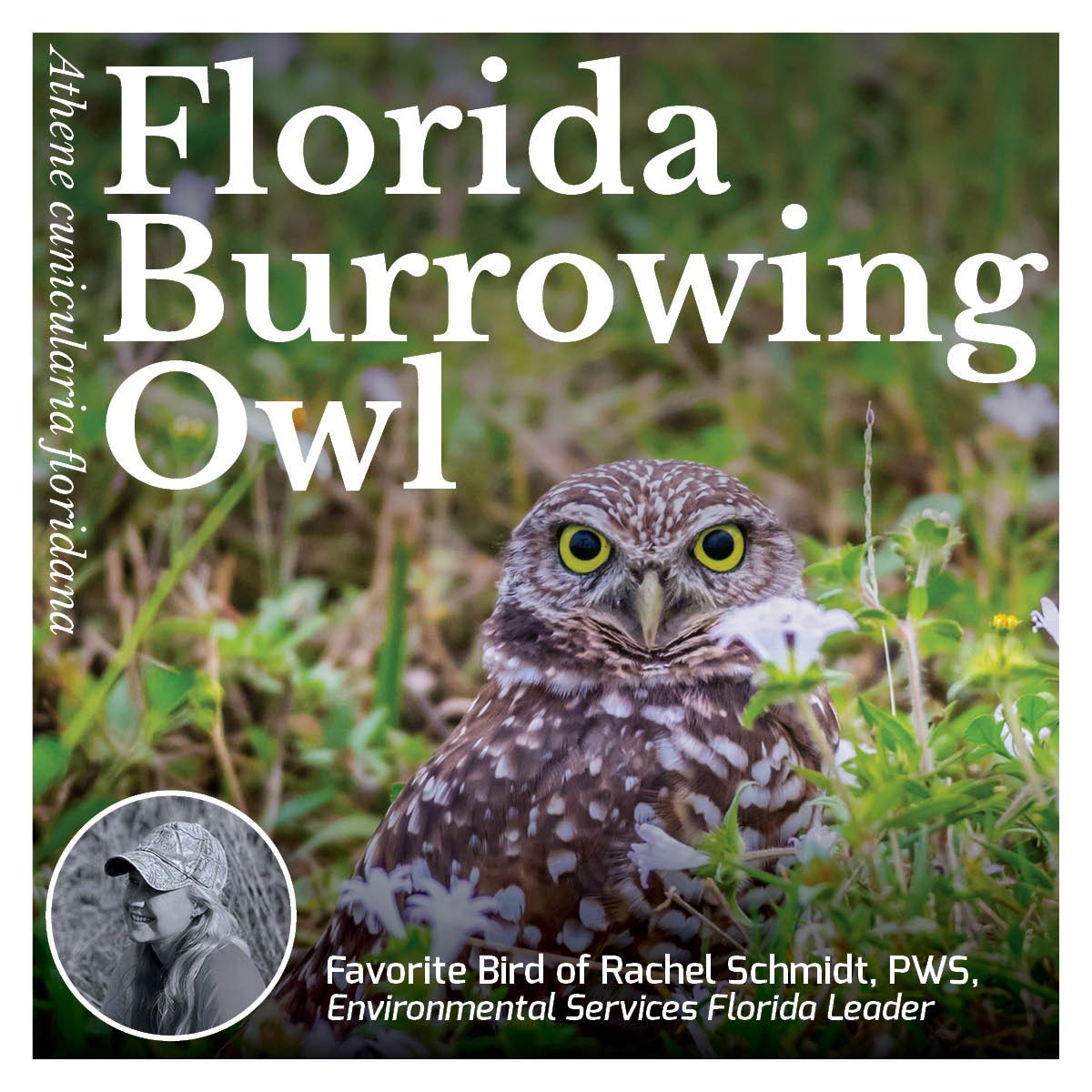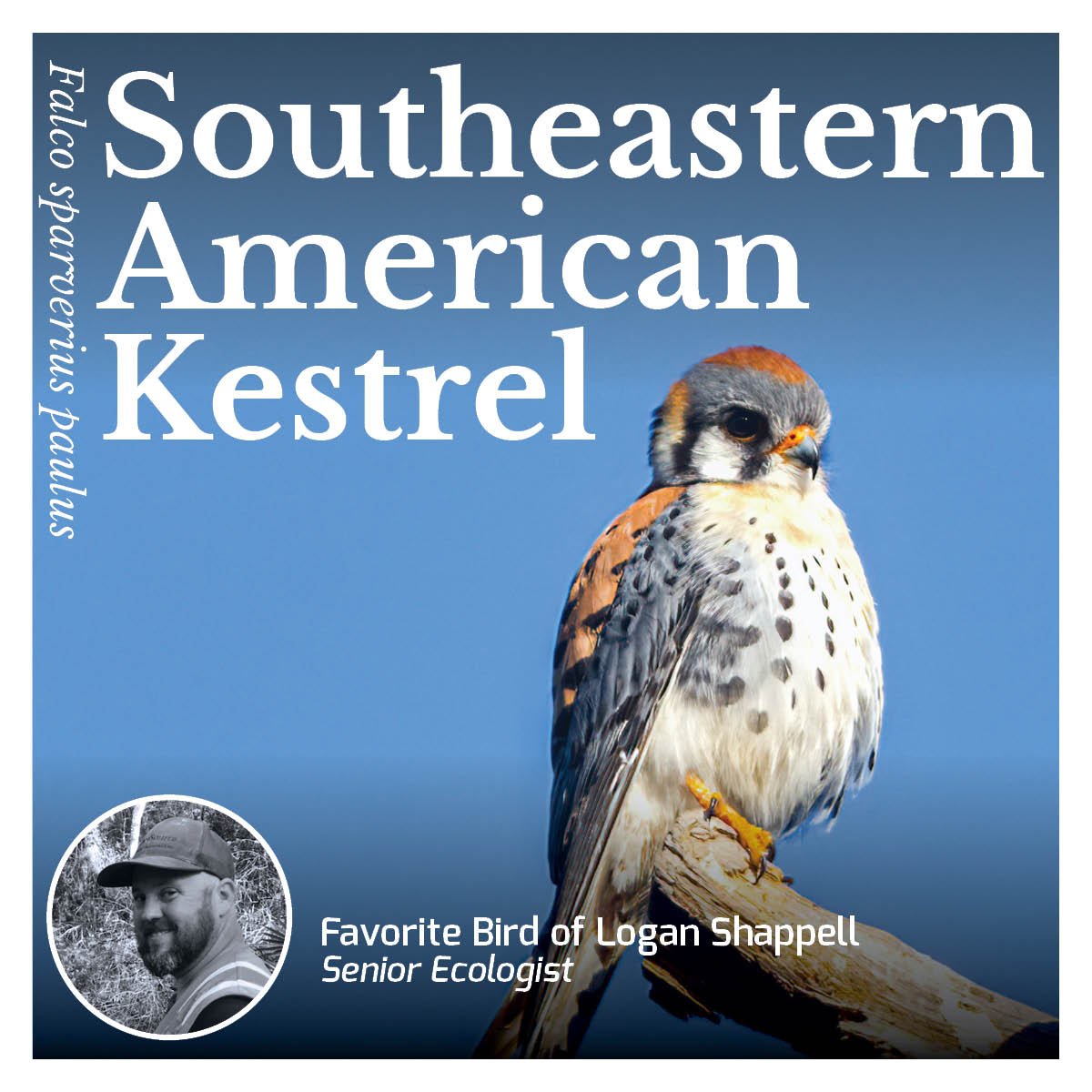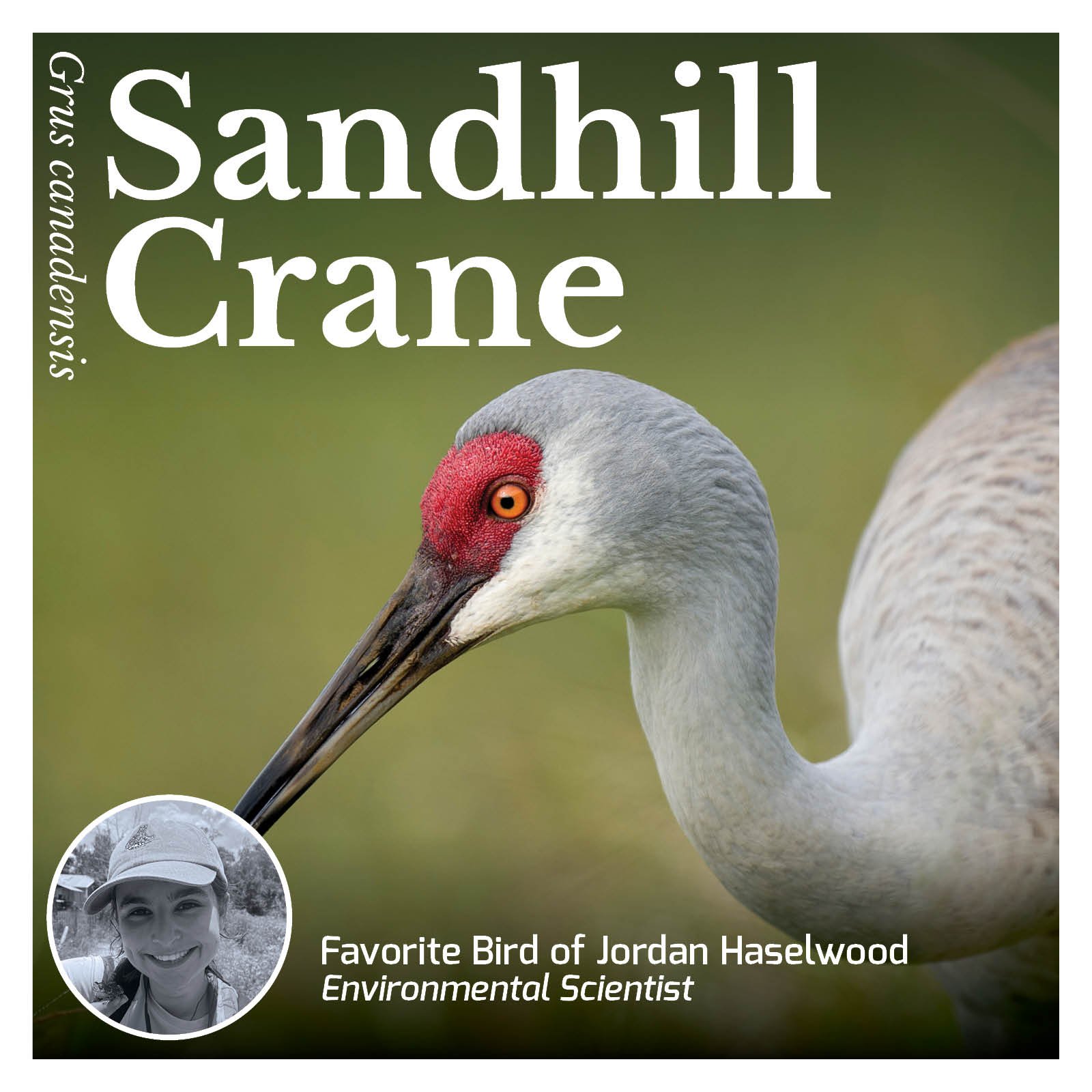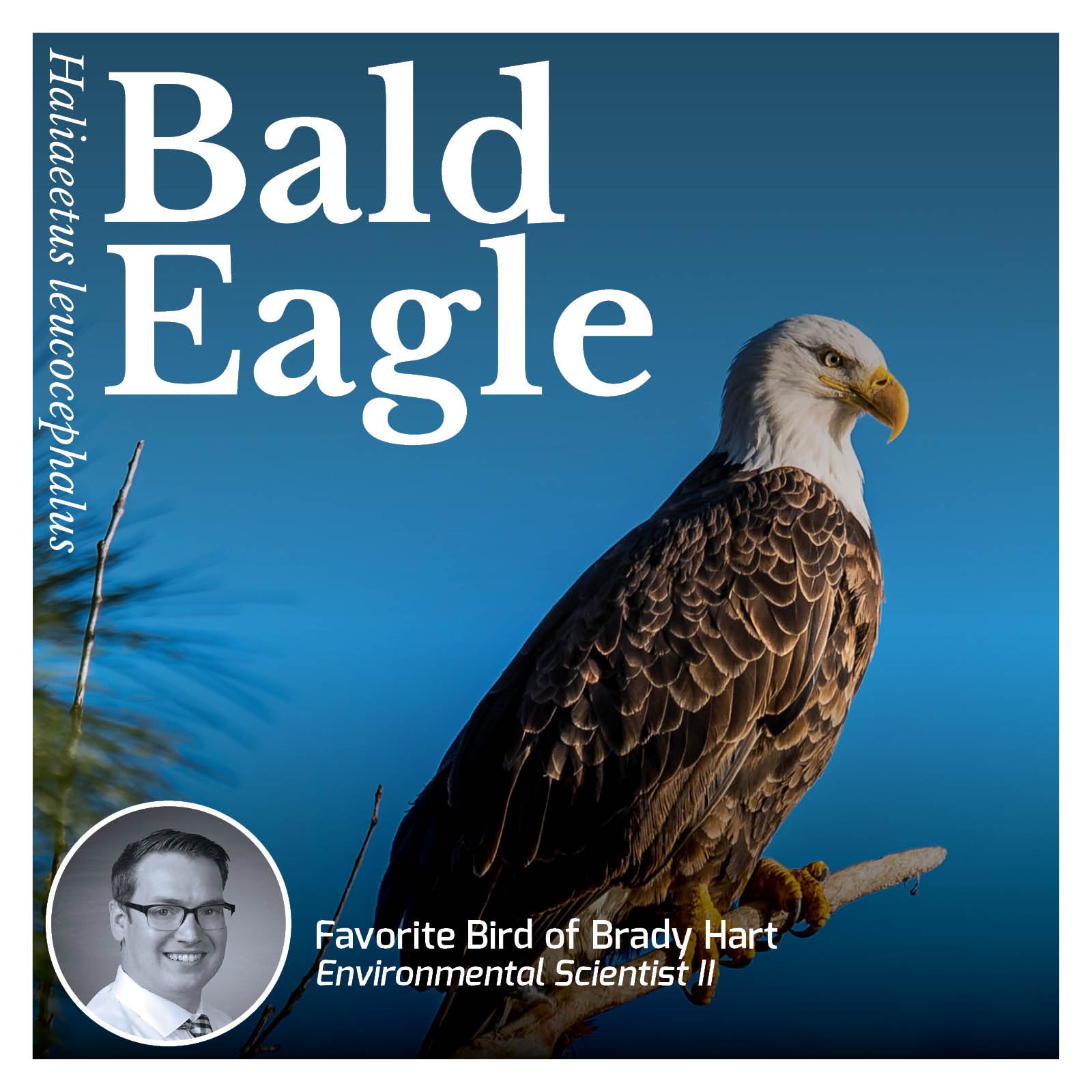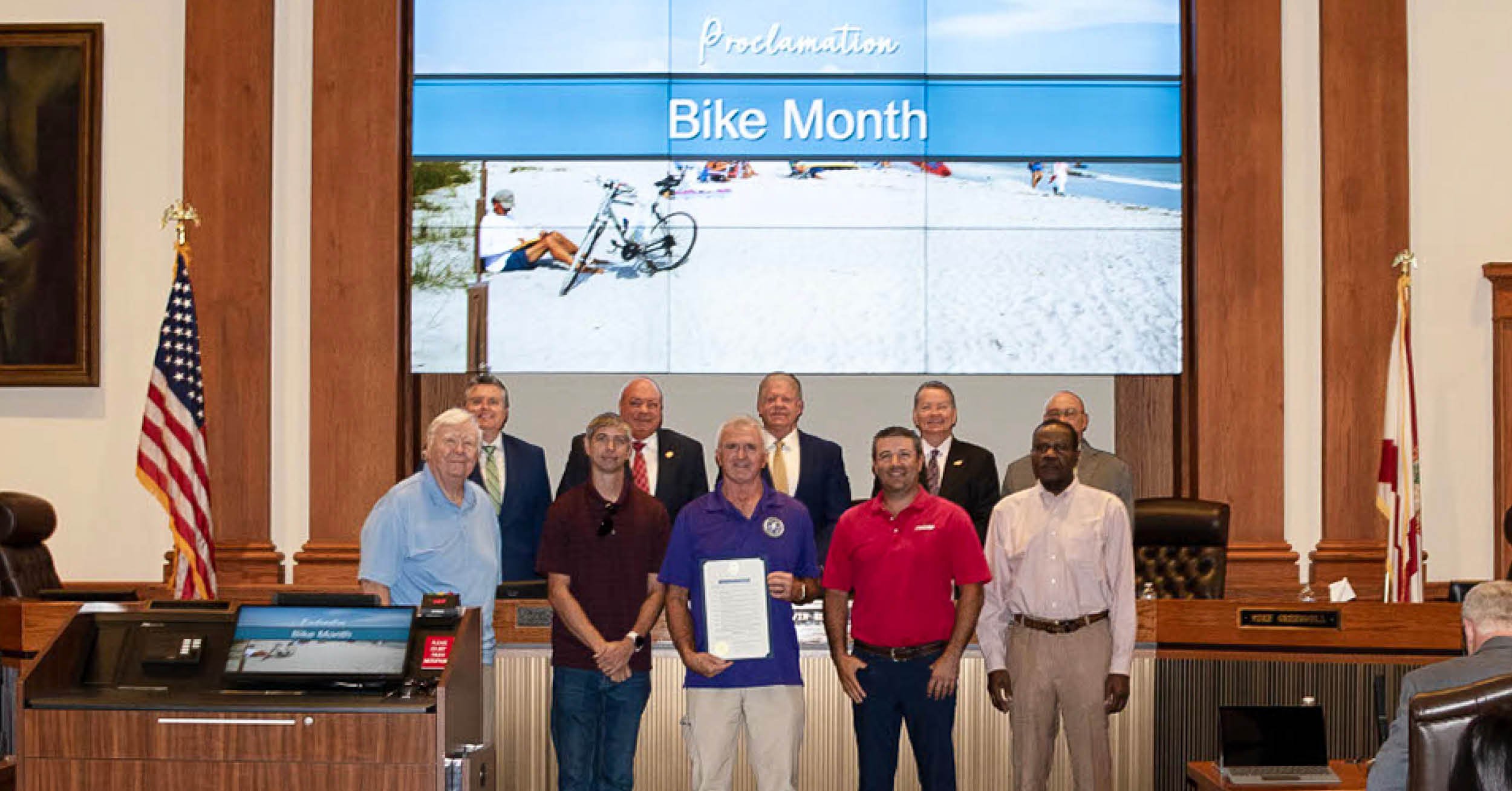National Bird Day, celebrated annually on Jan. 5, honors the beauty and diversity of birds and their importance to our ecosystem, while raising awareness about the challenges they face. Organized by the Avian Welfare Coalition, the campaign sheds light on the bird trade, the harsh conditions of bird breeding mills, and ways to improve the welfare of captive birds.
DRMP’s Planning and Environmental Services Group (PLES) understands the importance of protecting our feathered friends and their habitats. With expertise in environmental permitting, threatened and endangered species surveys, and wetland and stream delineations, our team helps ensure that development projects consider the needs of bird species and other wildlife. By providing responsible planning, we support the preservation of critical habitats that many birds call home, allowing them to thrive for generations to come.
In recognition of National Bird Day, we asked some of our PLES team members to share their favorite birds and some interesting facts about them.
“They are my favorite bird because it's a unique, friendly, and intelligent bird that is only found in Florida.
- George McLatchey, PWS, CEP, vice president/environmental services group leader
- Federally threatened species listed by the U.S. Fish and Wildlife Service and protected by the federal Migratory Bird Treaty Act and the federal Endangered Species Act
Studies have shown that scrub jays are highly intelligent birds, capable of complex behaviors like caching food and remembering where they stored it. A scrub-jay family’s permanent territory averages about 22-24 acres, which makes it challenging for young birds to find suitable space for a family. The current Florida Scrub-Jay population is estimated at about 7,700-9,300 birds. The biggest threat to their population is habitat loss and development.
“They are my favorite bird, because for the most obvious reason, they are cute and pint-sized.
- Rachel Schmidt, PWS, Environmental Services Florida Leader
- State threatened species listed by the Florida Fish and Wildlife Conservation Commission and federally protected by the Migratory Bird Treaty Act
The Florida Burrowing Owl is unique in the fact that they spend most of their time on the ground and live in underground burrows. They are one of the smallest owl species and often live in family groups. Unlike most owls, they are active during the day, making them diurnal. However, they are most active at dawn and dusk. The biggest threat to their population is habitat loss and development.
“There are two characteristics I like about them. First, they are territorial, and although they are the smallest raptor, they will defend the nest from larger birds like the red-tailed or red shouldered hawk. I’m also fascinated by the way they hunt. They fly into the wind and can hover in one spot, like a helicopter in mid-air. Once they find their prey, they fold their wings and dive at high speed.
- Logan Shappell, Senior Ecologist
The Southeastern American Kestrel is the smallest falcon found in North America and has a distinctive call which sounds like “klee-klee-klee”. This species of kestrel is non-migratory and is found in open woodlands.
For the past eight years, I have been conducting Southeastern American Kestrel monitoring within the 150-acre Spruce Creek Wildlife Preservation Area in Marion County, Fla. The Spruce Creek Wildlife Preservation Area was set aside as mitigation to compensate for the impacts to the Southeastern American Kestrel and other protected species as a result of the community’s construction. The Spruce Creek Golf and Country Club had fallen out of compliance with its Wildlife Management Plan, and DRMP became involved to bring the preservation area into compliance and provide ongoing monitoring. The Spruce Creek Wildlife Preservation Area has thrived under the appropriate wildlife management. We have seen successful nesting between mating pairs of kestrel, a healthy gopher tortoise population, and use by other species, such as coyote, foxes, and Sherman’s fox squirrel.
“This is my favorite bird because they are large (around 4 feet at their tallest) and make a distinct call. I have fond memories of living near wetlands and hearing their calls during the day. Plus, their babies are adorable.
- Jordan Haselwood, Environmental Scientist
Sandhill cranes are known to perform elaborate courtship dances that involve leaping, bowing, and flapping their wings. These dances serve not only as mating rituals but also as a way to deepen the bonds between pairs. They are one of the oldest bird species on the planet. The oldest confirmed Sandhill crane fossil, discovered in Florida, dates back approximately 2.5 million years. They are commonly seen around the Orlando, Fla., area, especially in wetlands. Due to this, some of their biggest threats include habitat loss, overhunting, and getting hit by cars.
“The bald eagle is my favorite bird because they are incredibly intelligent and adaptable birds .
- Brady Hart, Environmental Scientist II
No longer listed as endangered or threatened under the Endangered Species Act. Federally protected by the Bald and Golden Eagle Protection Act, federal Migratory Bird Treaty Act, and by state-level protections
Florida has one of the densest concentrations of nesting bald eagles in the lower 48 states, with an estimated 1,500 nesting pairs. Concentrations of nesting territories are clustered around several significant lakes, rivers, and coastal systems throughout the state. The bald eagle is the mascot of my alma mater, Georgia Southern University. The current mascot “Freedom” just turned 20 years old. Freedom is a male Southern bald eagle that was found knocked out of a nest in Maitland, Fla. It was discovered that he had an injury to his beak and suffered from an infection. Rushed to the Florida Audubon Center for Birds of Prey, Freedom made a complete recovery from the infection, but the injury to the beak was permanent, preventing his release into the wild. With the permission of the U.S. Fish and Wildlife Service, Georgia Southern University acquired Freedom in 2004. Today, Freedom serves as an ambassador for wildlife and as an institutional symbol.
To learn more about our ecological services, click here.


